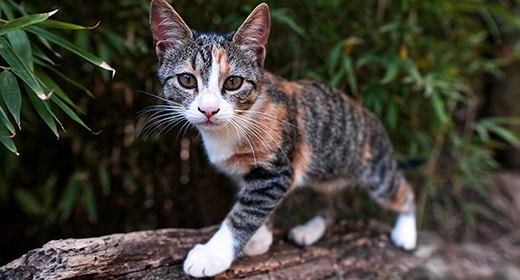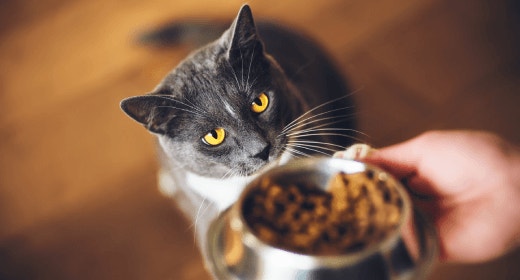
The Pet Owner’s Guide to FLUTD and Urinary Tract Infections in Cats
Is your cat leaving puddles of urine in your bathtub or on your tile floors? Making lots (and lots) of trips to the litter box? Or crying out in pain when they urinate?
Your furry friend might have feline lower urinary tract disease (FLUTD), which is just scientific jargon for a collection of painful conditions that can wreak havoc on your kitty's bladder and/or urethra. Here's what you need to know about FLUTD and urinary tract infections (UTIs) in cats.
Common Urinary Tract Issues in Cats
Some of the most common FLUTD diseases include urinary tract infections, urinary stones caused by a buildup of minerals, obstructions within the urethra or an inflamed bladder.
Differences in Urinary Tract Issues in Male and Female Cats
Urinary tract issues in general can be common for any adult cat, but especially males; male cats have longer and narrower urethras that are more prone to dangerous blockages. Female cats (especially older female cats) tend to get UTIs more commonly than male cats. Both male and female cats can experience recurrent urinary tract issues.
What Causes FLUTD in Cats?
Because FLUTD covers a range of urinary issues, it has many possible causes, including:
- Not drinking enough water
- Not urinating often enough
- A urine pH level that's too high
- Too many minerals and not enough water in the urine
- Living in a multicat household
- Stress or anxiety
- Abrupt changes in daily routine
Signs of Urinary Tract Infections in Cats
The American Veterinary Medical Association(open in new tab) says to watch for these major signs of UTIs or related urinary issues in cats:
- Straining to go
- Frequently urinating a little at a time
- Prolonged attempts to go
- Crying out while urinating
- Excessively licking their genital area
- Peeing outside the litter box
- Passing blood in their urine

How to Treat FLUTD or a UTI
If your cat seems to be in a lot of pain or isn't able to pee at all, it's time for an immediate vet visit. Your pet might have a urethral obstruction, which is a life-threatening condition your veterinarian must treat quickly.
You can also try these general tips to help keep your cat's urinary tract healthy:
- Always provide your cat with clean, fresh water.
- Feed smaller, more frequent meals.
- Add wet cat food to your pet's diet to help keep them hydrated.
- Encourage your feline to drink as much as possible to help keep mineral buildup at bay and flush their urinary system.
- Be sure you have the right number of litter boxes: usually one more box than the number of cats you have.
- Place litter boxes in quiet parts of the house.
- Always keep litter boxes clean — they should be scooped once or twice a day.
- Maintain a steady routine and make your home as stress-free as possible. Consider how your own stress level, any visiting houseguests and other pets might be affecting your cat.
Can a Cat's UTI Go Away on Its Own?
While some UTIs and FLUTD diseases can heal on their own, early diagnosis and treatment from the vet can help reduce your cat's discomfort as well as lower their chances of reinfection or the issue developing into something worse (like a complete blockage or kidney infection).
How to Help Maintain Your Cat's Urinary Health
In addition to the tips above, feed your cat delicious IAMS™ PROACTIVE HEALTH™ Urinary Tract Health, made with real chicken. It helps promote your cat's urinary system health by reducing urinary pH and helping to control mineral levels.
We use a sodium salt to acidify urine and help prevent struvite crystals from forming (and potentially irritating or blocking your cat's urinary tract!), and our formula helps control levels of calcium, magnesium and phosphorus in your cat's urine, which is a good thing. Supplementing your cat's dry food diet with wet cat food can also help keep them hydrated.
When you provide your kitten or cat a high-quality diet, lots of water and a clean litter box, you're helping set your cat's urinary tract health up for success. IAMS™ is also always here to help! Click the chat button at the bottom of your screen to talk with a pet care professional.




